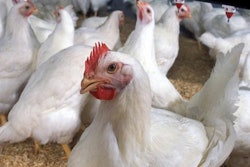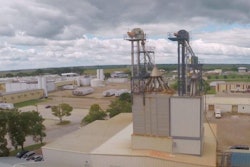“Cost is the number one reason for ingredient changes,” said Dr. Amy Batal, corporate nutritionist for Sanderson Farms, during her presentation on “Ingredient Changes…Why Are They Important and Why Should the Mill Manager Speak Up?” at USPOULTRY’s 2016 Feed Mill Management Seminar in Nashville, Tenn. There were approximately 200 mill managers and allied suppliers in attendance.
“Open communication between feed mill managers and nutritionists is key when looking to add new ingredients. Unless managers explain how the ingredient affects feed quality, bin space, production and formulation costs, we will not know what challenges exist at the mill,” Batal commented.
In his presentation on “Avian Influenza: All In or All Out,” Dr. John Glisson, vice president of research for USPOULTRY, shared the staggering effects on trade and the entire industry when an avian influenza outbreak occurs. “There is no evidence showing that avian influenza might have been spread by feed,” explained Glisson. “But we must all take HPAI prevention seriously, or we will all be out of luck and out of business.”
Frank Garczynski, feed mill manager for Koch Foods, presented an industry case study on Koch’s biosecurity best practices at the mill. Garczynski shared photos and other protocol that Koch Foods has implemented for sanitizing vehicles entering the property and other measures they have taken to improve biosecurity at their facilities. “Being located within close proximity of the Mississippi flyway and Eastern and Western flyways in Mississippi, we could not sit and wait for an outbreak to make changes,” said Garczynski.
Michael Waters, protective security advisor for the U.S. Department of Homeland Security, reviewed the importance of conducting security and safety audits for critical infrastructure, including feed mills, during his presentation, “Enhanced Critical Infrastructure Protection Visits & Infrastructure Survey Tool.”
“The majority of critical infrastructure is privately owned. We do not have regulatory authority to go in and tell people what to do, nor do we have the resources. We want to become partners with the private sector to establish a relationship and inform critical infrastructure managers about how important their facility is and how important increased vigilance is,” remarked Waters.
Other topics included: Regulatory Update; OSHA/Safety Data Sheets/E-Logging; Motivating Your Team to Success with Laughter; Steam Quality and Application; Pellet Quality: Why It’s Important and How to Get There; Proper Sampling for Success; New Mill Virtual Tour; Inventory and Energy Efficiencies…Capturing the Low Hanging Fruit; and Feed Mill Automation for FMSA Compliance.
USPOULTRY holds feed mill management seminar
Approximately 200 mill managers and allied suppliers attended USPOULTRY’s 2016 Feed Mill Management Seminar in Nashville
March 27, 2016

















